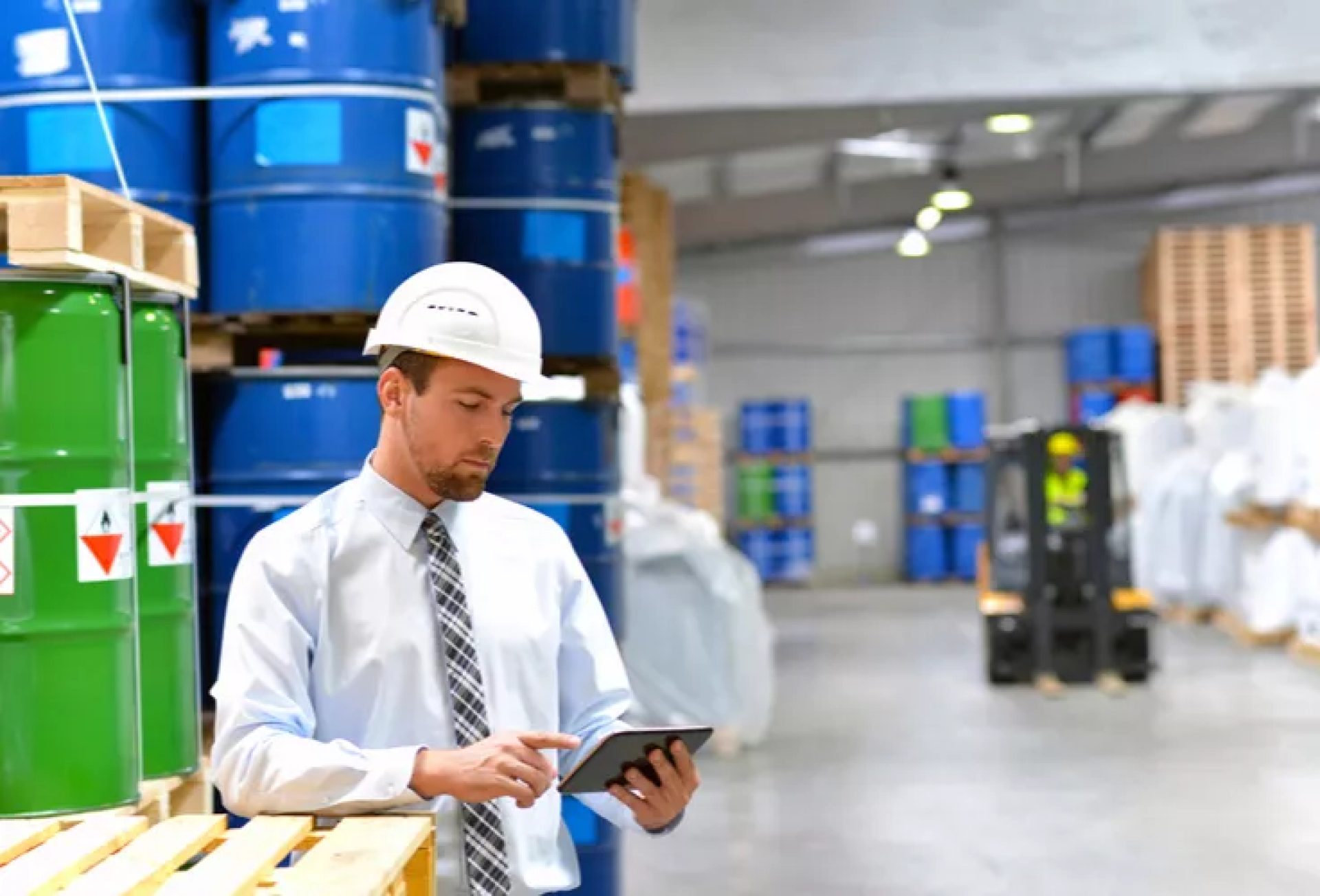Getting to Know Dangerous Goods Warehouses: Safety Not to Be Overlooked in the Logistics Industry

What Are Dangerous Goods?
Dangerous Goods refer to substances or materials with physical or chemical properties that pose risks to human life, animals, the environment, or property. Proper storage and transportation in compliance with strict standards are essential. According to the United Nations (UN), Dangerous Goods are classified into nine categories :
Class 1 : Explosives - Substances or objects that can explode when subjected to impact, heat, or sparks (e.g., ammunition, fireworks, gunpowder).
Class 2 : Gases - Substances that are hazardous if leaked (e.g., chlorine, nitrogen, LPG).
Class 3 : Flammable Liquids - Liquids that ignite easily (e.g., fuel, thinner).
Class 4: Flammable Solidsm - Solids that are easily ignitable, self-igniting, or react with water to release flammable gases (e.g., magnesium, sodium, calcium).
Class 5: Oxidizing Substances and Organic Peroxides
- Oxidizing Substances: Non-flammable but can cause other materials to ignite (e.g., calcium hypochlorite).
- Organic Peroxides: React dangerously with other substances or may explode when heated (e.g., acetone peroxide).
- Toxic Substances: Can cause death or serious injury if inhaled or ingested (e.g., cyanide).
- Infectious Substances: Contain pathogens (e.g., bacteria cultures).
Class 7: Radioactive Materials - Substances or objects emitting ionizing radiation during decay (e.g., monazite, uranium).
Class 8: Corrosive Substances - Cause severe damage to living tissue or property upon contact (e.g., sulfuric acid, hydrochloric acid).
Class 9: Miscellaneous Dangerous Substances and Articles - Other hazardous materials not covered in Classes 18 (e.g., ammonium fertilizers, dry ice).
What Is a Dangerous Goods Warehouse?
A Dangerous Goods Warehouse is a specially designed facility for storing hazardous materials that may pose risks to humans, animals, the environment, and property. The construction and storage procedures must comply with international standards and strict regulations from authorities such as the Department of Industrial Works. Additional services may include import/export, transportation, and packaging.
Technologies Enhancing Safety in Dangerous Goods Warehouses
1.Ventilation and Temperature Control Systems - HVAC (Heating, Ventilation, and Air Conditioning) systems maintain a stable environment for hazardous goods, with sensors monitoring temperature and vapors to prevent risks for volatile or flammable substances.
2.Fire Detection and Suppression Systems - For flammable materials, warehouses are equipped with heat and smoke sensors, automatic fire suppression, and chemical-specific extinguishing agents or foam.
3.Hazardous Chemical and Gas Detection Systems - Specialized sensors monitor toxic or volatile chemicals; alerts are triggered if levels exceed safety thresholds.
4.Warehouse Management System (WMS) - Enables real-time tracking of inventory, storage duration, quantity, status, and reporting.
5.Automated Storage and Retrieval System (AS/RS) - Robotic systems handle storage and retrieval, reducing direct human contact with hazardous goods.
Why Store Dangerous Goods in a Specialized Warehouse?
Hazardous goods pose risks to life, property, and the environment if stored or transported improperly. Past incidents, such as explosions or chemical leaks in Samut Prakan, Thailand, have caused serious health and environmental impacts. Therefore, storing these goods in specialized warehouses is critical for safety and legal compliance. Key benefits include:
1.Reducing accident risks - Minimizing leaks, explosions, and other hazards.
2.Protecting the environment - Preventing chemicals from contaminating soil, water, and air.
3.Safeguarding surrounding communities - Warehouses are typically located in industrial zones with strict management.
4.Enhancing logistics efficiency - Technologies improve safe handling and transportation of hazardous materials.
5.Compliance with laws and safety standards - Following regulations such as Thailands Hazardous Substances Act (B.E. 2562), IMDG Code, or ADR, reduces legal risks and penalties.
Laws and Regulations on Transport and Storage of Dangerous Goods
Strict regulations govern the transport and storage of hazardous materials to ensure safety. Key laws and standards include:
1.Hazardous Substances Act (B.E. 2562, Thailand) - Establishes rules for the management, storage, and transport of hazardous materials, including penalties for violations. It focuses on preventing harm to public health and the environment.
2.Road Transport Regulations - Each country has rules for transporting hazardous goods by road. In Thailand, the Department of Land Transport sets requirements covering permits, vehicles, drivers, packaging, route control, emergency management, inspection, and reporting.
3.International Civil Aviation Organization (ICAO) Standards - Regulate the safe air transport of dangerous goods globally, covering packaging, labeling, handling, reporting, and inspections to protect passengers, staff, and the environment.
4.International Maritime Organization (IMO) IMDG Code - Governs maritime transport of hazardous goods, detailing packaging, labeling, storage, and transport procedures to minimize risks and facilitate safe shipping.
GTL OCS is ready to provide comprehensive logistics consulting to support your business, backed by over 10 years of expert experience.
Contact us for consultation :
LINE OFFICAL : @gtlocsthailand
Contract Number : 02 460 2044


